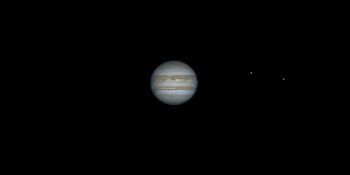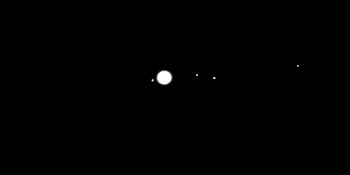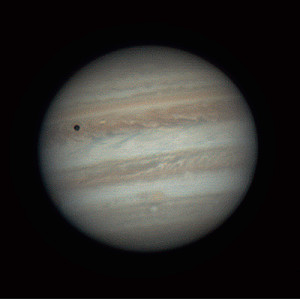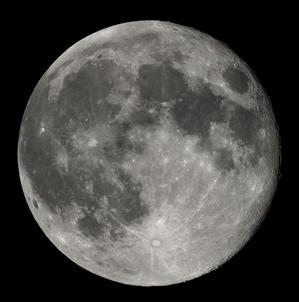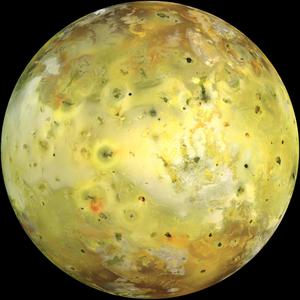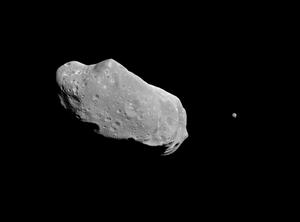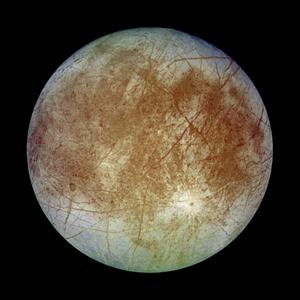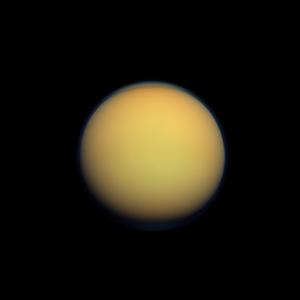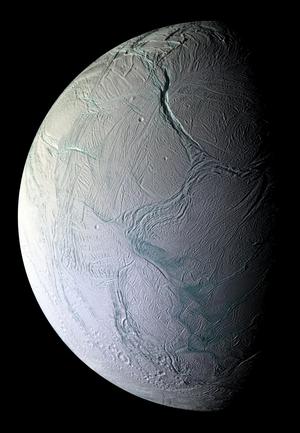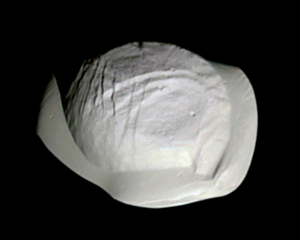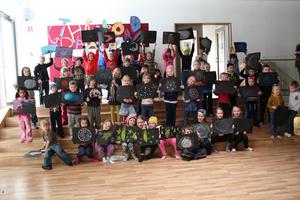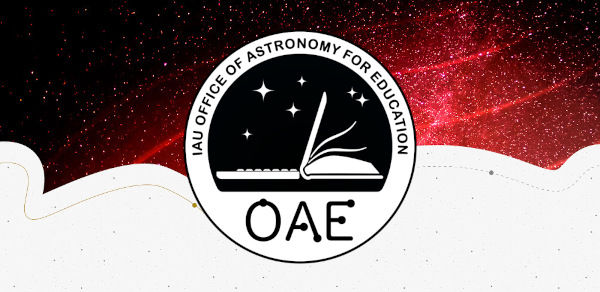Glossary term: Moons
Description: Moons are celestial bodies that orbit planets, dwarf planets, or smaller objects such as asteroids. The Earth has one moon, called the Moon. Most other Solar System planets have moons, although Mercury and Venus do not. The dwarf planet Pluto has several moons as do a small number of other dwarf planets and asteroids. Moons are natural satellites; artificial satellites such as those used for communication or scientific purposes are not moons.
Many moons formed in orbit around the planet, dwarf planet, or other body that they orbit. It is thought that the Moon formed orbiting the Earth from material ejected from a major collision between the Earth and a planetoid in an early stage of the Solar System's formation. Many other (mostly smaller) moons are asteroids which were captured by the gravity of the object they orbit.
Related Terms:
See this term in other languages
Term and definition status: This term and its definition have been approved by a research astronomer and a teacher
The OAE Multilingual Glossary is a project of the IAU Office of Astronomy for Education (OAE) in collaboration with the IAU Office of Astronomy Outreach (OAO). The terms and definitions were chosen, written and reviewed by a collective effort from the OAE, the OAE Centers and Nodes, the OAE National Astronomy Education Coordinators (NAECs) and other volunteers. You can find a full list of credits here. All glossary terms and their definitions are released under a Creative Commons CC BY-4.0 license and should be credited to "IAU OAE".
Related Media
Jupiter's Rotation, by Vishal Sharma, India
Credit: Vishal Sharma/IAU OAE
License: CC-BY-4.0 Creative Commons Attribution 4.0 International (CC BY 4.0) icons
Jupiter Moons Movie2, by Nicolas Hurez, Paul-Antoine Matrangolo, and Carl Pennypacker, United States of America
Credit: Nicolas Hurez, Paul-Antoine Matrangolo and Carl Pennypacker/IAU OAE
License: CC-BY-4.0 Creative Commons Attribution 4.0 International (CC BY 4.0) icons
Jupiter, Io and its shadow, by Ralf Burkart, Germany
Credit: Ralf Burkart/IAU OAE
License: CC-BY-4.0 Creative Commons Attribution 4.0 International (CC BY 4.0) icons
Full moon
Credit: Luc Viatour credit link
License: CC-BY-SA-3.0 Creative Commons Attribution-ShareAlike 3.0 Unported icons
Io
Credit: NASA/JPL/University of Arizona credit link
License: PD Public Domain icons
Ida and Dactyl
Credit: NASA/JPL credit link
License: PD Public Domain icons
Europa
Credit: NASA/JPL/DLR
License: PD Public Domain icons
Titan in natural colours
Credit: NASA/JPL-Caltech/Space Science Institute credit link
License: PD Public Domain icons
Titan with surface features
Credit: NASA/JPL/University of Arizona/University of Idaho credit link
License: PD Public Domain icons
Enceladus
Credit: NASA/JPL/Space Science Institute credit link
License: PD Public Domain icons
Pan
Credit: NASA/JPL-Caltech/Space Science Institute credit link
License: PD Public Domain icons
Related Activities
Deadly Moons
astroEDU educational activity (links to astroEDU website) Description: Through art and science, children learn about moons of our solar system.License: CC-BY-4.0 Creative Commons Attribution 4.0 International (CC BY 4.0) icons
Tags: Art , Creativity , Hands-on , Drawing Age Ranges: 6-8 , 8-10 , 10-12 Education Level: Primary , Secondary Areas of Learning: Fine Art focussed , Social Research Costs: High Cost Duration: 1 hour Group Size: Group Skills: Asking questions , Communicating information